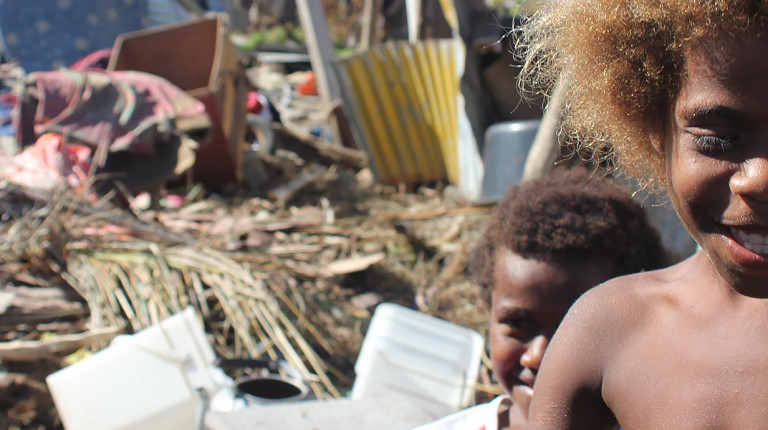Tropical Cyclone Pam hit the tiny Pacific Island nation of Vanuatu in March 2015, leaving devastation in its wake. The United Nations called it one of the worst disasters to hit the Pacific.
The storm affected at least 166,000 people – nearly two-thirds of the population. On some of Vanuatu’s 83 islands, up to 90 percent of the homes were wiped out.
Save the Children has worked in Vanuatu for more than 25 years; it is the largest non-government agency in the country.
Before the cyclone hit, we were already stockpiling supplies and helping families to prepare.
In the hours and days after any natural disaster, Save the Children focuses on keeping communities alive, and safe.
Families need food, water, shelter and medical aid.
But our work continues long after a disaster has occurred.
We restore basic services, get schools up and running, and support communities to rebuild their livelihoods and help families get back on their feet.
From March to June 2015, we reached 45,000 people, including 29,000 children. We helped families restore their homes by giving out shelter kits, toolkits, building equipment and household items like pots and pans.
Tensions are high when communities struggle to cope with a lack of clean water, food and shelter.
For some families, the stress carries an increased risk of violence and abuse, and it is the children who are most vulnerable.
Many are still traumatised from witnessing what the storm did to their homes and families.
Save the Children is continuing to support 6000 children to help them recover from the emotional trauma of the Cyclone Pam.
We have established child-friendly spaces, and we’re working with Government departments, teachers, and community and church leaders to help safeguard children from neglect, abuse and exploitation.
An estimated 400 schools were damaged, or destroyed during the cyclone.
Without access to education, many children are destined for a life of poverty.
Save the Children is working to re-open schools and repair their sanitation systems so children can return to the classroom.


